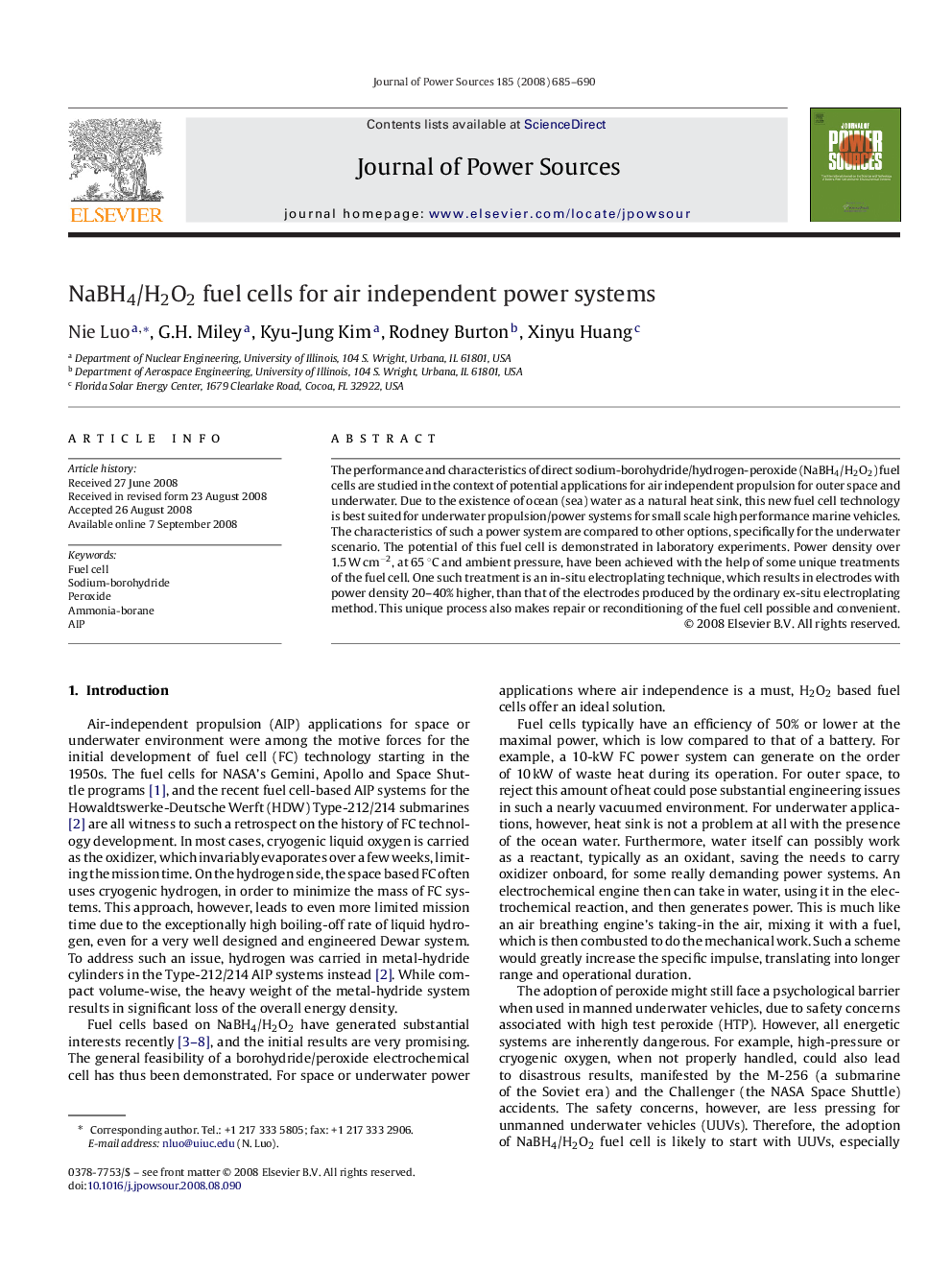| Article ID | Journal | Published Year | Pages | File Type |
|---|---|---|---|---|
| 1290168 | Journal of Power Sources | 2008 | 6 Pages |
The performance and characteristics of direct sodium-borohydride/hydrogen-peroxide (NaBH4/H2O2) fuel cells are studied in the context of potential applications for air independent propulsion for outer space and underwater. Due to the existence of ocean (sea) water as a natural heat sink, this new fuel cell technology is best suited for underwater propulsion/power systems for small scale high performance marine vehicles. The characteristics of such a power system are compared to other options, specifically for the underwater scenario. The potential of this fuel cell is demonstrated in laboratory experiments. Power density over 1.5 W cm−2, at 65 °C and ambient pressure, have been achieved with the help of some unique treatments of the fuel cell. One such treatment is an in-situ electroplating technique, which results in electrodes with power density 20–40% higher, than that of the electrodes produced by the ordinary ex-situ electroplating method. This unique process also makes repair or reconditioning of the fuel cell possible and convenient.
